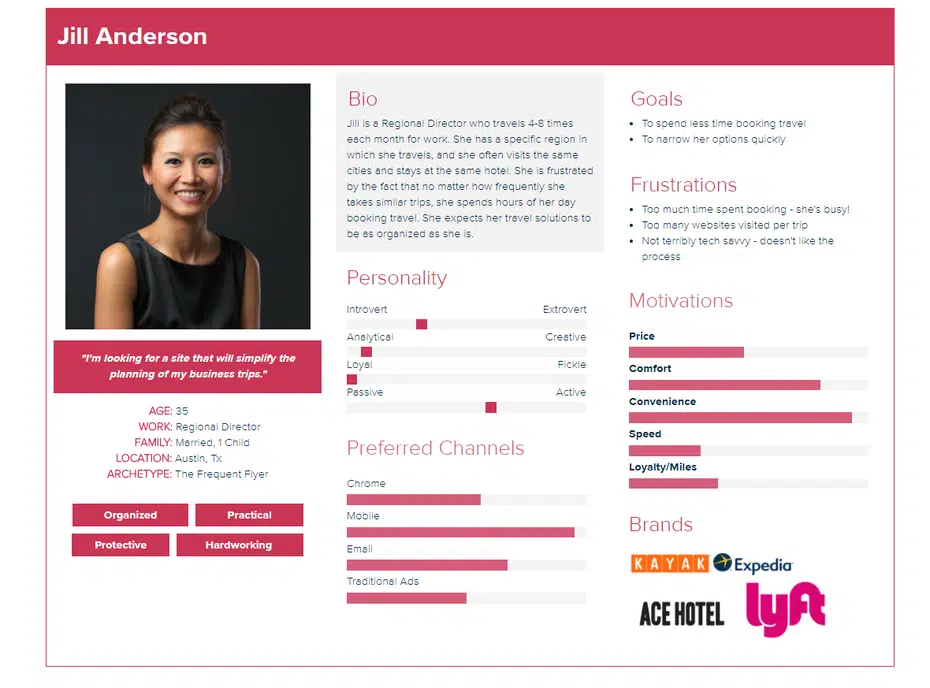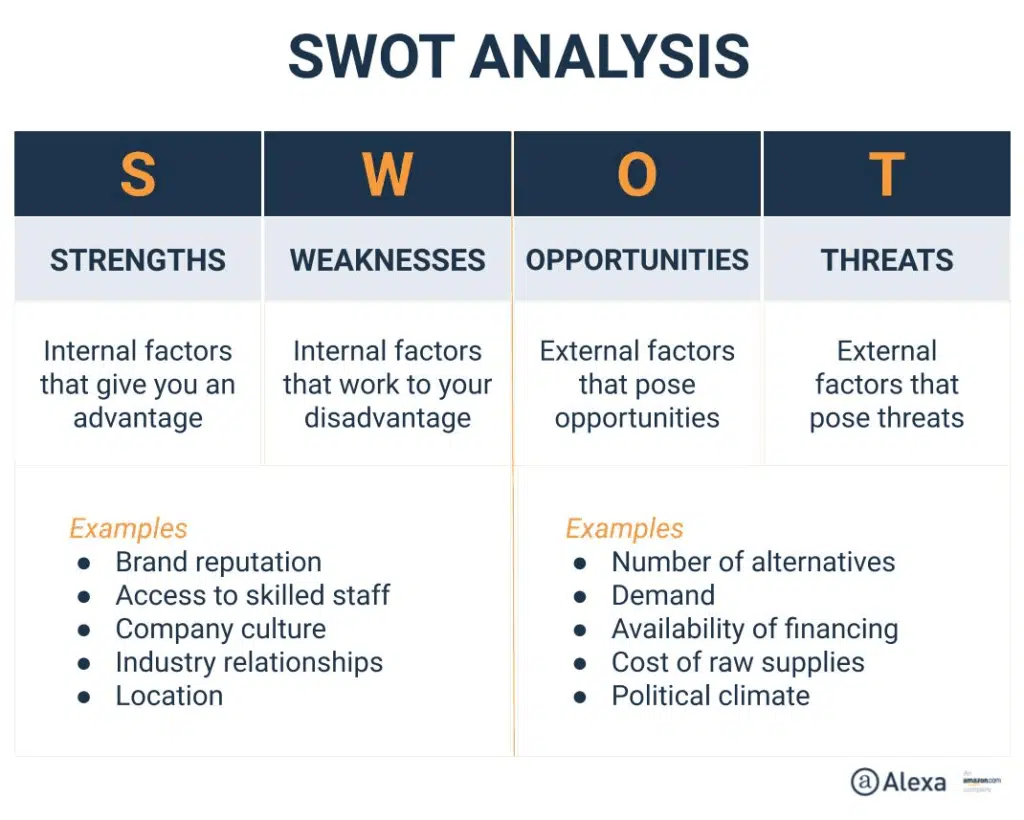This article has been contributed by Chris Norton.
Every successful business needs a marketing plan – especially if you want to grow your brand. And it’s no different for a graphic design business.

In this guide, you will find out how to create an effective marketing plan so that you can successfully promote your graphic design business. These tips will help you make decisions about where to invest your resources so you can grow your business fast.
What is a Marketing Plan?
Before we get too far into this guide, it is important to ensure that we have a shared understanding of the topic. So, let’s get our definitions in order.
A marketing plan is a report that outlines your marketing strategy over some time. Most businesses have an annual marketing plan, which is broken down into quarterly and monthly targets.
A marketing plan typically provides:
- Overview of your marketing goals
- The tasks you need to complete to achieve those goals
- The key performance indicators (KPIs) you’ll use to assess your success
The scope of your marketing plan will depend on the size of your graphic design business. For example, a graphic design company with 100+ employees will have a marketing plan with fewer activities than a freelance designer who is just starting a business.
Regardless of the size of your business, your marketing plan needs to fit your needs.
6 Steps to Creating a Marketing Plan to Promote Your Graphic Design Business
Now we’ve got our definitions out of the way, I want to discuss how to create a practical marketing plan for your graphic design business. The strategy I’ll share is the same approach I use at Prohibition PR for the majority of our clients.
1. Review The Health of Your Business
In my experience, creating a marketing plan is a great brainstorming exercise.
Annual plans are a chance to get the key people working for your business in the same room as each other to discuss strategies to help the business survive, grow, and prosper over the coming year.
I always start our marketing plan meetings by reviewing the targets we set ourselves the previous year. Reviewing the marketing plan for the previous year is a nice way to celebrate our successes.
A review of your old goals is a chance to see what you achieved in the last 12 months.
If your targets were too ambitious, you might have failed to achieve your goals. On the other hand, if your goals were too conservative, you might have easily achieved all of the marketing targets you set.
Based on my experience, we usually find that:
- We achieved some of our marketing goals and failed to hit other targets.
- Some of the goals we achieved did not have the impacts we expected.
A review of the previous years’ marketing plan is an opportunity to discuss your business’s success and failures with colleagues. These discussions are a good starting point for considering your goals for the upcoming year.
If this is the first year you are creating a marketing plan, you will skip this step.
2. Review Your Customer Persona
If you’ve spent any time researching company cultures, you’ll have probably come across some anecdotes about well-known companies.
For example, there is always an empty chair supposed to represent the customer at every Amazon meeting. I like this anecdote.
Every business relies on customers for revenue.
As you start preparing your marketing plan, it’s worth setting aside time to consider your customers. You should be able to define the characteristics of your ideal customer easily. Most businesses do this by creating one or more customer personas.
A customer persona is an archetype of your ideal customer. The type of customer persona you create will depend on who you serve.
If you’re managing a business-to-consumer (B2C) graphic design company, you might describe the type of person who purchases your designs. You might try to define their interests, what they do in their spare time, and the publications they read, for example.
Image source: 99designs.com.au
If you are managing a business-to-business (B2B) graphic design firm, the type of business is just as important as the person. In this case, you want to define things like the sector the business operates in, its size, and other relevant factors.
You then need to consider who in the company makes the purchasing decisions. That person might be the Head of Marketing, for example.
A customer persona can provide useful insights for your marketing plan. If you know what types of publications your ideal customer reads, you can pay for advertising in these magazines.
If you have detailed demographic information about your customers, you can use this information for paid advertising campaigns.
Defining your customer persona should be straightforward. If you struggle to do this, spend time with your customers. Interviews, questionnaires, and focus groups are all effective ways to learn more about your customers.
If you want your marketing to be effective, you must spend time learning about your customers.
3. Conduct Competitor Research
After considering your ideal customer, you need to consider your competitive landscape.
Graphic design is a competitive industry. There are a lot of really talented artists around. Unfortunately, many of these talented people will be competing with you for customers.
I recommend you start your competitor research by drawing up a list of five direct competitors. These should be companies that are operating in your sector targeting the same type of customers.
You should individually review the marketing strategies of each of these companies. At Prohibition PR, I have a decent understanding of my sector, and I like to keep track of what other companies operating in the area are doing.
I imagine you are probably familiar with your biggest competitors as well.
There are a lot of different frameworks you can use for competitor analysis. The most well-known is the SWOT analysis.
Image source: blog.alexa.com
Fundamentally, these frameworks are just a way to help organize your thoughts.
If you are just starting out and haven’t conducted competitor analysis before and want to keep things simple, I suggest you do the following:
- Review their social media channels. Identify which social media channels these companies have a presence, are active, and have lots of engagement.
- Look around their company website. Look at the type of content they produce on their blog, the case studies they create, website traffic, etc.
- Identify what type of marketing activities they undertake. For example, are they very active at events, run PPC campaigns to generate fresh leads, etc.
Your goal through doing this research is to find commonalities between competitors.
For example, if all of your competitors are active on LinkedIn and you haven’t bothered to create an account, you should probably sign up to LinkedIn and connect with potential clients.
In addition to identifying commonalities, you should also look out for things a competitor is doing that you find impressive. For example, one of your competitors might be running an unusual marketing campaign on Facebook.
Business is competitive. There are many talented people in this world. Competitor analysis is a chance for you to learn from your peers.
The goal is not to steal their ideas. Your goal is to find inspiration from the people who are operating in your sector. That inspiration can help you come up with innovative marketing ideas and campaigns.
4. Consider & Set Your Marketing Goals
You should always start any business plan with a clear sense of what you want to achieve. The marketing plan for your graphic design business is no exception.
You want to set clear, quantifiable goals that, preferably, align with revenue targets.
In my case, I always start any marketing plan by considering my sales goals. For example, I might set the goal of “increasing company profits by 30% this financial year.”
Having a company goal forces you to consider how to achieve that target. You then break down how to achieve the sales targets by setting sub-goals.
Hypothetically, the best way for you to increase your revenue by 30% could be to:
- Sign contracts with 12 new clients this financial year
- Retain 60% of your existing clients
- Create new products or services, like brand strategy coaching
You then consider how to achieve these sub-goals.
Breaking down your business goals using a logical framework will help you define what you want to achieve and consider how you will achieve your targets.
A good marketing plan will have clearly defined quantifiable goals.
For example, “sign a contract with six new clients in this financial year.” Avoid a vague goal like “sign some clients.” You want goals that you can measure.
Image source: recbound.com
To achieve your goals, you will need to conduct a mixture of marketing and sales activities.
For example, to sign a new client, you might need to pitch my services to 30 companies a year and run paid advertising.
If you’re a freelancer, you’ll need to do these activities yourself. However, at larger agencies, these activities are sometimes split between the sales and marketing departments.
The framework I shared above will work fine for a small company with a combined sales and marketing team.
If you’re working in the marketing department for a graphic design agency that has a separate sales team, I recommend you either:
- Work together on the sales and marketing plan.
- Review the sales plan before you start your marketing plan.
Sales and marketing activities complement each other. After all, the goal of effective marketing is to generate new sales for your company.
5. Set Your Annual, Quarterly & Monthly Goals
I enjoy working closely with my colleagues and setting our goals for the year. These discussions are great brainstorming sessions that help us strategize and plan.
It’s a constructive way to exchange ideas and ensure everyone on the team understands what we want to achieve.
The quantifiable goals that you set out in your marketing plan are your key performance indicators (KPIs). Your KPIs are a way to track if you’re on course to achieve your target.
Start by defining your annual goals. Once you have your annual goals, break down your marketing plan into quarterly and monthly goals.
Let me give you an example:
- Sign contracts with 12 new clients this financial year
- Sign contracts with 3 new clients a quarter
- Sign contracts with 1 new clients a month
Breaking down your goals into bite-sized chunks helps you understand what you need to do every month to achieve your annual marketing goals.
You can use this information to do practical things, like make sure someone is responsible for each of these tasks.
6. Create Your Executive Summary
The final thing you might want to do once you’ve finished your marketing plan is to create an Executive Summary.
The Executive Summary is a one-page summary of your plan. It is useful if you plan to present your plan to a board of directors or investors. I recommend you create your Executive Summary when you’ve finished composing your marketing plan.
Concluding Comments
I hope you found this guide on creating a marketing plan to promote your graphic design business useful.
As I’ve shared with you, our marketing plan at Prohibition PR provides a framework for defining the business’s goals and the quantifiable targets we need to hit those goals.
The marketing plan you create must be fit for purpose. By this, I mean it’s relevant to the needs of your business.
If you’re an entrepreneur running an agency by yourself, your marketing plan doesn’t need to be complicated. You can create a plan in less than a day and carry on with your work providing a great service to customers.
Larger businesses need more complex marketing plans. They have more staff to manage and more tasks to consider.
However, that end goal is still the same. Your marketing plan is your strategy to help your business grow over the next 12 months — best of luck.
_
About the author: By Chris Norton, Founder of insight-led PR agency Prohibition, former University lecturer, author of “Share This Too” and listed in the UK’s top 10 PR and social media bloggers.






